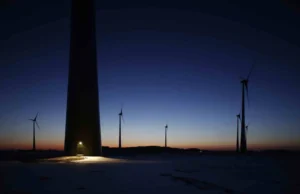China is at risk of wasting a whopping $490 billion on new coal plants it doesn’t need under the country’s 13th Five Year Plan, as slower power demand growth, structural changes to the country’s economy, increased non-coal capacity targets, and carbon pricing all combine to slash coal-fired generation, according to a new analysis from the Carbon Tracker Initiative.

The new study, Chasing the Dragon? China’s coal overcapacity crisis and what it means for investors, was published Monday by the Carbon Tracker Initiative, an independent financial think-tank focused on the impact of climate change on capital markets and investment in fossil fuels. Chasing the Dragon finds that there is actually very little additional capacity beyond what already exists necessary, specifically, additional capacity is only required by 2020 if power generation growth exceeds 4% per year and coal plants are run at a capacity factor of 45% or less.
Currently, the country has 895 GW of operating coal capacity, or 2,689 coal plants being utilized less than half the time, with another 205 GW of capacity under construction. The conclusion, therefore, is that if plants under construction are finished, and existing capacity is run at 45% capacity factor, then 210 GW of coal capacity will be unnecessary in 2020 if power generation growth stays at around 3% — which it has recently fallen to after a historical average of 10%.
Additionally, coal is not the only energy source being built in China, with expected increases in hydro, wind, solar, gas, nuclear, and biomass generation listed under the 13th Five Year Plan, which would more than account for expected power demand growth.
“It is clear that China is coming to terms with the fact it does not need any more coal capacity in a market where existing plants are not even running half the time,” said Matthew Gray, senior analyst and author of the report. “The dynamic policy environment suggests China is trying to work out how to avoid wasting half a trillion dollars on unneeded coal plants.”
“There are clear signs that Chinese coal generation is peaking, as the growth in alternative energy sources can meet lower power demand growth during the 13 FYP,” added James Leaton, Carbon Tracker’s head of research. “This can only spell bad news for exporters betting on China propping up the seaborne thermal coal market in the future.”
Chasing the Dragon goes on to look at the future gross profitability of China’s existing coal fleet, and the news is not great.
China is moving into a new era of power market reforms, and is set to introduce a national Emissions Trading Scheme, which together “will erode the margins for coal plants to unattractive levels by 2020.” Specifically, the Carbon Tracker Initiative points to the introduction of a carbon price of $US10 t/CO2 in line with the Emissions Trading Scheme, as well as a 15% reduction in coal power tariffs from ongoing market reforms, leading to the gross profitability of China’s coal fleet halving by 2020. This will result in 27 GW becoming cash-flow negative, and 140 GW making a gross profit of only $5 per MWh or less.
“Reforms to the power sector and the introduction of a national ETS mean that the current profitability of the coal fleet is not likely to continue,” said Matthew Gray. “This is essential in order for China to start planning a phase-out of its coal capacity.”
Source: CleanTechnica. Reproduced with permission.










